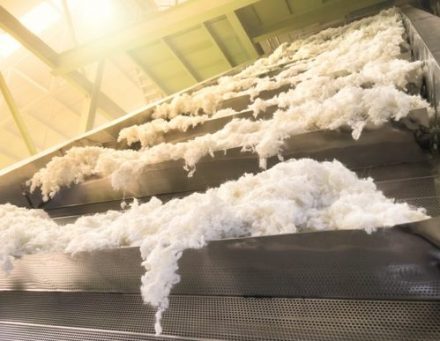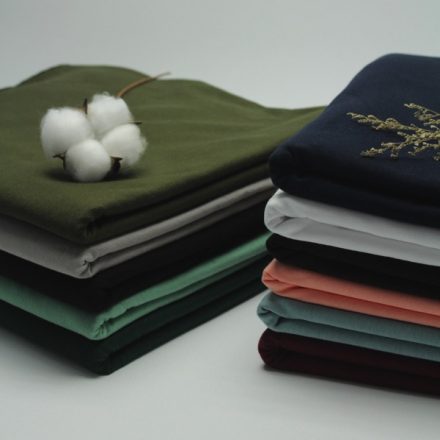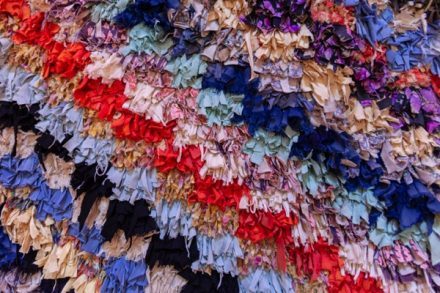Smart Key: Recycling—can the fashion sector become self-sufficient in resources? The - Première Vision Paris - Denim Première Vision - Première Vision New York
Unlock the secrets of eco-responsible materials with our Smart Keys. Take an in-depth look at the questions around eco-design, as we analyse the solutions available to make your materials sourcing even clearer! Today, let’s explore recycling and recyclability. Often brandished as an illustration of eco-responsibility, from baby steps to an over-frequent phenomenon, it has only taken a few years for recycling to blossom in the fashion world.
Alternately loved and decried, is recycling the solution to a virtuous collection?
As a sector under intense scrutiny for its excessive use of natural and fossil resources, fashion has found a counter to this concern with the boom in recycled materials.
Promoting a new, non-linear production system, associating recycling with circularity has become commonplace. However, the golden rules of the circular economy are the 5Rs: Refuse, Reduce, Reuse, Recycle, Return to the earth. Recycling is therefore just one stage in a circular approach and not enough on its own.
A long-standing technique for wool but more innovative for other fibres, the range of recycled materials is now rich and diverse, with all types of fibre available in a recycled version, whether of natural, animal, synthetic or artificial origin. Recycled materials are characterised by a number of parameters:
The source

These are resources used instead of raw primary materials, coming from closed circuit recycling, from within the fashion sector:
- Pre-consumer textiles or leathers, from the industrial phase (fibre production/spinning/weaving/knitting/offcuts) or unsold finished products.
- Post-consumer textiles or leathers, where old clothes are collected for reuse.
Or open-circuit recycling, where the resources come from another sector:
- Waste from plastic production, PET bottles, fishing nets
- Vegetable by-products from the agri-food or cosmetic industries
The technology
They do not have the same advantages or limits:

Mechanical recycling
This is currently the most widespread technique. It can be used to produce recycled wool and cotton, as well as the vast majority of recycled synthetics.
It produces materials with a reduced environmental impact, but the fibre obtained by these methods is generally of lower quality and has to be blended with a virgin fibre to compensate.
As the processed material is not perfectly light in colour, the possibilities for dyeing are also limited.

Chemical recycling
Like all technologies, it depends on the way it is used. It is important to analyse the energy required for the process and the CO2 emissions generated to demonstrate a reduced carbon footprint compared to a virgin material.
This technology can require high levels of heat, pressure and chemical solvents, so it is important to demonstrate that there is not a negative impact on water, air and the environment.
The specifications relating to chemical substances, such as those of Oeko-tex Passport, Bluesign or ZDHC (Zero Discharge of Hazardeous Chemicals) can accompany these developments.
The major advantage of chemical recycling, particularly for synthetic materials, is to recreate the native structure of the polymer, the monomer. This purified version can be used to recreate a fibre that has identical properties to the virgin fibre, thus offering the promise of a material that can be recycled endlessly.
It can also allow cottons and cellulosic materials to be recycled into new artificial materials.
Read also: Smart Key: Is polyester recycling a sustainable solution?
How they are used
There are a number of outlets, depending on the resource and the techniques used:

– Cottons and wools are frequently found in collections after having been mechanically recycled. They are sorted by colour and type of fibre, processed to remove impurities and shredded in order to be re-spun.
– Cottons and vegetal residues can be chemically recycled and thus produce new cellulosic materials.
– The vast majority of recycled synthetics come from PET bottles or fishing nets, mostly produced using mechanical recycling.
– Recycled leathers are mainly produced from pre-consumer resources, tanning or manufacturing offcuts, which are mechanically processed into reconstituted leather, made up of recycled leather fibres and binding agents in polyurethane or latex, or from recycled leather fibres set at the surface of a synthetic material.
The certifications
To assist in the identification of recycled materials, there are two widely-used certifications:

RCS – Recycled Claim Standard only verifies the recycled content, and sets a minimum level of 5% of recycled resources in a material.
GRS – Global Recycled Standard has more rigorous criteria with a minimum of 20% recycled material, extending this to 50% in order to communicate to consumers that a product is GRS certified.
This certification also covers additional requirements for chemical inputs and social and environmental aspects.
To avoid getting caught up in an approach that could be described as greenwashing, what needs to be respected in order to demonstrate a commitment to recycling?
Smart Key #1: Be transparent

Recycled or recyclable? This often causes confusion.
A recyclable material has the potential to be recycled. However, although in theory many materials could be recycled, in practice, it is not always possible. It involves being able to create specific collection and processing networks, collecting recyclable materials in sufficient volumes to be able to launch an industrial production process and also scale up certain niche technologies.
The recycled nature of a material does not eliminate certain problems; notably the question of microfibres remains, whether the resource is virgin or recycled.
Beware as well of the myth of recycled synthetics as an apparently ideal response to the problem of plastics. Today, they still require some virgin hydrocarbon resources in order to ensure a good quality fibre. Consequently, if consumption of synthetic materials continues to increase at the same pace, the use of accompanying fossil fuel resources will remain substantial.
Recycled synthetics could represent an environmental advantage if, in parallel, there is an effort to reduce the overall use of synthetics.
Smart Key #2: Design for recycling: what helps and what hinders
In order to ensure optimal recyclability, certain criteria are known to help or hinder recycling.
Composition
Mono-materials, and long initial fibres are real assets to ensuring a second life for a material.
Elastane should not represent more than 2 – 5% of a material.
Work with bi-material blends, ideally of a similar typology (wool + cashmere, cotton + viscose, etc.) and limit the second material to 15 – 20%
Do not use metallic fibres
Multiple textures
It is recommended to avoid:
Complex fabrics like jacquard
Warp knits (which cannot be unravelled and therefore cannot be shredded),
Fabrics with a high degree of mechanical elasticity
Very thick materials or very fine threads
Embellishments and decorations
Certain finishes such as crease proof, flocking and coatings can disrupt recycling.
Bonded or sewn decorations are also problematic.
Smart Key #3: Textile-to-textile recycling
This is the cornerstone, which could create a step change and requires commitment and massive investment.

Only 1% of materials are recycled from textiles into textiles and this is the heart of the matter: there needs to be an effective recycling structure within the fashion industry.
Cotton and polyester are the two most widely used fibres worldwide. Textile Exchange says that just 1% of cotton and 15% of polyester comes from recycling, with 99% of recycled polyester coming from recycled PET bottles.
While it is undeniable that reusing plastic bottles means less fossil fuel resources need to be extracted, it also generates sourcing battles between industries, as the agri-food industry, the main supplier, ends up competing with the textile industry. The fashion industry must recycle what it sends to market, and not draw on materials from other sectors.
While recycling is one aspect of the circular economy, a truly responsible garment should primarily be longer-lasting, thanks to its quality and its capacity to supersede fashion trends.
Sources:
- ReHubs, A joint initiative for industrial upcycling of textile waste streams & circular materials – Euratex – Novembre 2020
- Position Paper : Chemical recycling implementation principles – WWF – Janvier 2022
- Chemical Recycling, State of play – Eunomia pour ChemTrust – Décembre 2020
- Circular Material Guidelines – Fashion Positive – Aout 2020
- Étude des perturbateurs et facilitateurs au recyclage des textiles et linges de maison – École Nationale Supérieure des Arts et Industries Textiles pour EcoTLC – Juillet 2014
